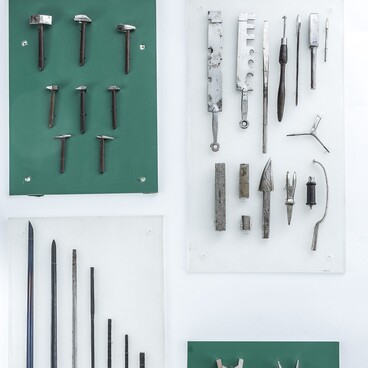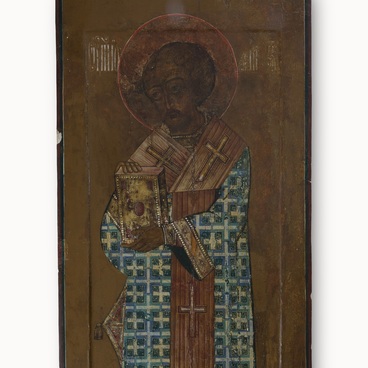The Zlatoust Arms Factory was founded by decree of Emperor Alexander I in 1815. Together, Russian mining engineers and artisans and foreign craftsmen managed to achieve a very high technical level of the production of bladed weapons.
This traditional manufacturing enterprise was divided into eight departments which consisted of workshops. In each workshop, the work was carried out by artels, which specialized in individual operations. As a result, the factory achieved superior performance and high operation speed and managed to increase the quality and quantity of products, which included 30,000 units of bladed combat weapons, manufactured annually in peacetime.
In the 1830s, the factory began producing household items, mainly on special orders. It manufactured mirrors, cutlery, candlesticks, trays, and paper knives. The factory received orders for the manufacture of products from various government departments. For example, the Ministry of War commissioned a large batch of medical instruments.
This surgical instrument kit from the collection of the Zlatoust City Museum of Local Lore includes 11 perfectly polished items. The kit consists of two sets and includes sharp-pointed and bellied scalpels, hinged scissors — straight pointed ones and curved ones, as well as a sharp single-toothed retractor.
Surgical instrument kits are stored in special red and brown leather cases. On the front side of each case, there is an embossed golden inscription “ZLATOUST”. Inside the red case, there is a sticker with the ink inscription “Zlatou 1832”.
Each instrument features the “ZLAT” stamp. The inscriptions and stamps indicate that such kits were produced for military doctors at the Zlatoust Arms Factory in the 1830s.
The instrument kit was donated to the Zlatoust Museum of Local Lore in 1960 by the museum of the Plekhanov Leningrad Mining Institute (known as the Mining Institute until 1917 and the Saint Petersburg Mining University since 2016).
This traditional manufacturing enterprise was divided into eight departments which consisted of workshops. In each workshop, the work was carried out by artels, which specialized in individual operations. As a result, the factory achieved superior performance and high operation speed and managed to increase the quality and quantity of products, which included 30,000 units of bladed combat weapons, manufactured annually in peacetime.
In the 1830s, the factory began producing household items, mainly on special orders. It manufactured mirrors, cutlery, candlesticks, trays, and paper knives. The factory received orders for the manufacture of products from various government departments. For example, the Ministry of War commissioned a large batch of medical instruments.
This surgical instrument kit from the collection of the Zlatoust City Museum of Local Lore includes 11 perfectly polished items. The kit consists of two sets and includes sharp-pointed and bellied scalpels, hinged scissors — straight pointed ones and curved ones, as well as a sharp single-toothed retractor.
Surgical instrument kits are stored in special red and brown leather cases. On the front side of each case, there is an embossed golden inscription “ZLATOUST”. Inside the red case, there is a sticker with the ink inscription “Zlatou 1832”.
Each instrument features the “ZLAT” stamp. The inscriptions and stamps indicate that such kits were produced for military doctors at the Zlatoust Arms Factory in the 1830s.
The instrument kit was donated to the Zlatoust Museum of Local Lore in 1960 by the museum of the Plekhanov Leningrad Mining Institute (known as the Mining Institute until 1917 and the Saint Petersburg Mining University since 2016).





